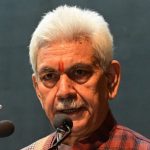‘Unless we act now, the 2030 agenda will become an epitaph for a world that might have been’, the remarks by Secretary General of United Nations Antonio Guterres speak in volumes of the extent of progress made in achieving SDGs by the due date, 2030. As the world has already crossed the halfway for achieving Sustainable Development Goals (SDGs), the current status regarding progress and performance on most of the SDGs has not been satisfactory. A mere 12% of the Sustainable Development Goals (SDGs) are currently on track. The latest Global Sustainable Development Report 2023 that summarized progress on the 2030 Agenda terms it as stagnation in the face of multiple crises.
The report while highlighting the existing gaps urges the global world to redouble its efforts and calls for success through strong political will and utilization of available technologies, resources and knowledge. The report also said that the impacts of the climate crisis, the war in Ukraine, a weak global economy and the lingering effects of the COVID-19 pandemic have revealed weaknesses and hindered progress towards the goals. The report further warns that while lack of progress is universal, it is the world’s poorest and most vulnerable who are experiencing the worst effects of these unprecedented global challenges. It also points out areas that need urgent action to rescue the SDGs and delivering meaningful progress for the peoples and planet by 2030.
Back home, the progress of India towards achieving various SDGs has been inconsistent and uneven. According to the United Nations SDG Index and Dashboards Report 2023, which assesses countries’ progress towards the Sustainable Development Goals (SDGs), the SDG Index Rank of India is 112 out of 166 countries, with an overall index score of 63.5 percent and spill-over score of 99.4 percent. No doubt, India has made considerable progress towards achieving some of SDGs, but on many others a lot is to be done. Regarding SDG Goal 1 of No Poverty, India has successfully lifted millions of people out of poverty, reducing the poverty rate from 45% in 1993 to around 21% in 2011.
In Goal 2 of Zero Hunger, the prevalence of undernourishment in India has decreased from 18.2% in 2004-2006 to 14.5% in 2016-2018. With regard to the goal 3 related to Good Health and Well-being, India has made significant improvements in maternal and child health, with a reduction in maternal mortality ratio from 254 per 100,000 live births in 2004-2006 to 113 in 2016-2018. Under-five mortality rate has also declined from 89 per 1,000 live births in 1990 to 34 in 2019. As far as Goal 4 of Quality Education is concerned, India has achieved near-universal primary school enrolment, with a net enrolment rate of 98.3% in 2018. In Goal 5 of achieving Gender Equality, the female labour force participation rate in India increased from 22.5% in 2005 to 23.3% in 2019. The child marriage rate declined from 47% in 2005-2006 to 30% in 2015-2016. As far as Goal 6, Clean Water and Sanitation is concerned access to improved drinking water sources has increased from 73% in 1990 to 94% in 2017. Access to improved sanitation facilities has also improved, rising from 21% in 1990 to 71% in 2017.
Despite of the achievements in SDGs, there is no room for complacency. According to a study led by Harvard T.H. Chan School of Public Health (2023), India is not on target to reach more than half of the United Nations’ Sustainable Development Goals (SDGs). The researchers used data from India’s 2016 and 2021 National Family Health Survey (NFHS) to assess progress toward nine out of 17 SDGs by looking at 33 indicators related to health and social determinants of health. Assessing how the indicators changed from 2016 to 2021, the researchers classified 707 district across India as well as the nation as a whole as either achieved, on target, or off target to meeting the SDGs by 2030.
Nationally, India is off target for 19 of the 33 SDG indicators, the study found. For critical indicators including access to basic services, wasting and overweight children, anemia, child marriage, partner violence, tobacco use, and modern contraceptive use more than 75% of districts were off target. There’s been no progress made on anemia, for example, and progress toward other goals is slow. The researchers estimated that India is only a year away from meeting the target for improved water access but that other targets, such as those regarding access to basic services and partner violence, could take until 2062 to reach. In the progress of the country towards achieving SDGs, the country’s social capital in the form of SHG’s, Community based organizations, Farmers and other producer cooperatives have played a crucial role in driving these achievements by fostering collaboration, community engagement, sharing of knowledge, promoting sustainable agricultural practices and inclusive development.
Leaving No One Behind
At the heart of Sustainable Development is the Equality and Non-discrimination. The 2030 Agenda for Sustainable Development provides a comprehensive framework for addressing global challenges and fostering a more equitable and sustainable future for all. Its 17 Sustainable Development Goals (SDGs) are not only a blueprint for achieving peace and prosperity for both the planet and its people but also a clarion call for global cooperation amongst United Nations (UN) member states. The Statement of Commitment of United Nations System Chief Executives Board (CEB) says that deepening, divisive and destabilizing inequalities within and among countries are threatening social progress and economic and political stability, affecting all pillars of the United Nations’ work, including development, human rights and peace and security. If inequalities continue to widen, development may not be sustainable.
These SDGs seek to achieve socio-economic development, with the underlying theme of ‘Leaving no one behind’ (LNOB). This theme goes beyond helping the most impoverished by fighting discrimination in every form and reducing inequalities globally, based on the UN human rights framework. Five factors have been proposed as key to understanding who is being left behind and why. These factors are discrimination, place of residence, socio-economic status, governance, and vulnerability to shocks.
The pledge to leave no one behind is a commitment to end extreme poverty in all its forms and to act explicitly to ensure that those who have been left behind can catch up to those who have experienced greater progress. It is the central, transformative promise of the 2030 Agenda for Sustainable Development and it’s Sustainable Development Goals (SDGs). It represents the unequivocal commitment of all UN Member States to eradicate poverty in all its forms, end discrimination and exclusion, and reduce the inequalities and vulnerabilities that leave people behind and undermine the potential of individuals and of humanity as a whole.
The ‘Leave No One Behind’ (LNOB) also reminds us to focus on discrimination and multiple and intersecting inequalities that undermine the agency of people as holders of rights. It is true that many of the constraints our peoples face in accessing different welfare and social safety net programmes cannot be attributed to mere lack of resources or destiny. These are the result of the regressive laws, policies and social evils that need to be immediately abandoned. The endaveour to reach the furthest behind first needs a comprehensive approach that entails identifying those left behind, the root cause why they have been left behind and doing away with those causes, prioritizing the actions needed, ensuring their grassroots participation and empowerment.
(Dr. Kumar writes on agriculture and social issues. He can be reached at: [email protected])








